
Visit to an expedition vehicle manufacturer
Story
In Schladming, Austria, a workshop develops vehicles for extreme conditions.
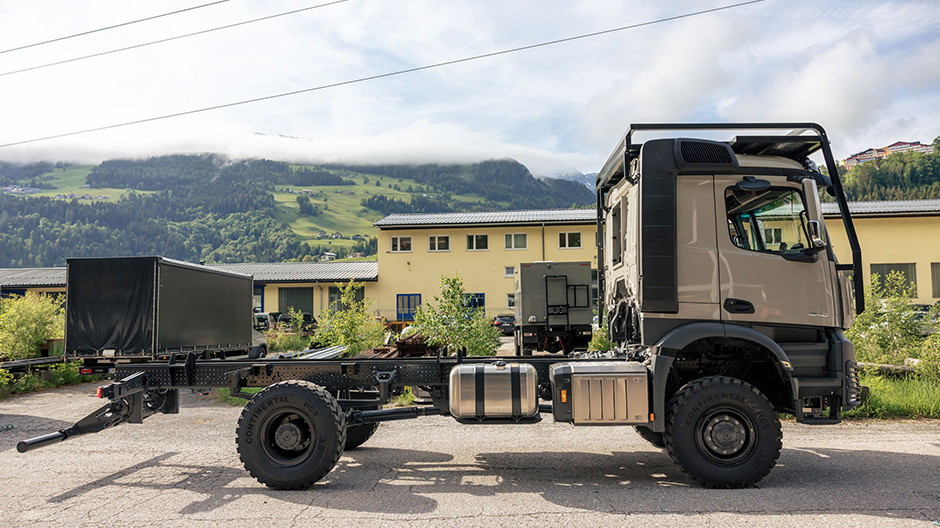
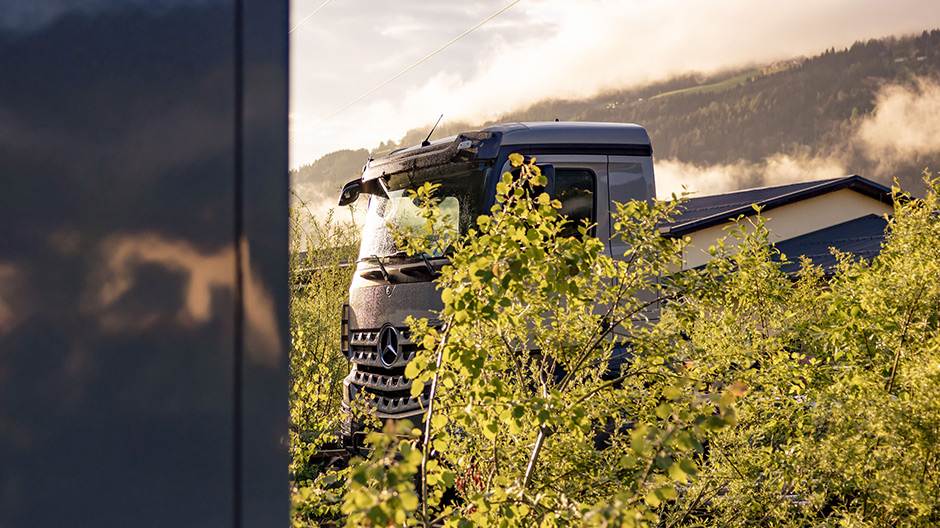
A steel girder is hanging on four metal chains under a crane and is being lifted over a shiny stone-grey box. Straps are attached and the box is floating in the air in no time. An Arocs 1840 4x4 rolls up in reverse at walking pace. The box, a 3.8-tonne cabin, is slowly placed on the truck and anchored there with long 36-millimetre bolts. The Arocs has now made considerable progress on its journey to becoming an expedition vehicle.
This article contains additional material (videos, images and reports etc.) for registered RoadStars members. In order to experience the article to the full, you need to log in with your RoadStars account or register for one free of charge.
Become a RoadStar and gain access to exclusive content and campaigns!
Login for RoadStars members
Not yet a member? Join RoadStars now
Obtain exclusive access to exciting events and activities which only RoadStars can offer.
Join RoadStarsVehicles for adventurers.
This type of vehicle developed here by the company Krug Expedition in Schladming, Austria, are becoming increasingly popular. Adventurers want to take their mobile home to places off the beaten track where normal camper vans can’t go.
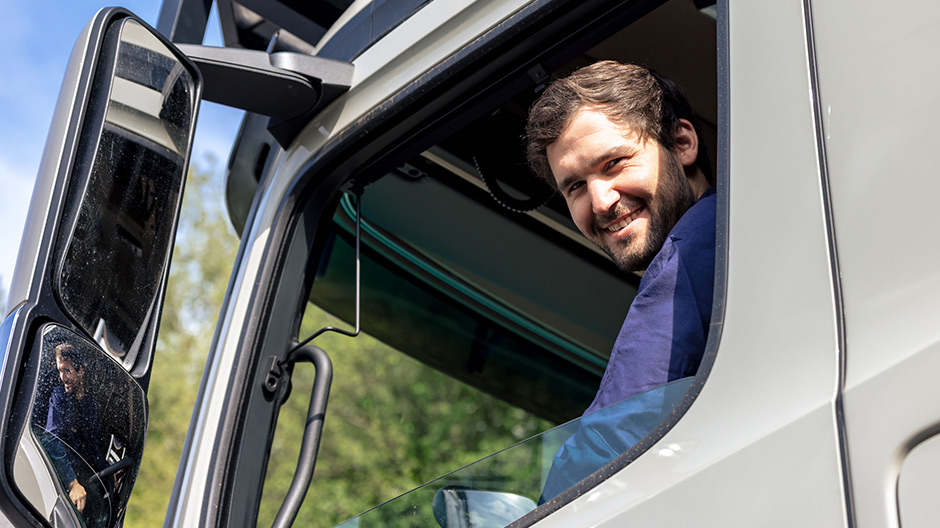
Werner Müller.
Werner Müller – who has been working in sales at the company headquarters in Schladming, Austria at the foot of the mighty Dachstein Mountains since 2021 – has already been on a trip around the world with an expedition vehicle himself. “The vehicles have to cope with extreme conditions such as very high or low temperatures, altitude or soft substrates. For journeys to Siberia, everything has to be frost-proof – and the diesel isn’t allowed to freeze either. In deserts, on the other hand, the cooling capacity has to be spot on to keep the engine at operating temperature. At extreme altitudes, such as the mountain passes in India, the heating has to work properly despite the low oxygen content of the air,” says the 32-year-old.
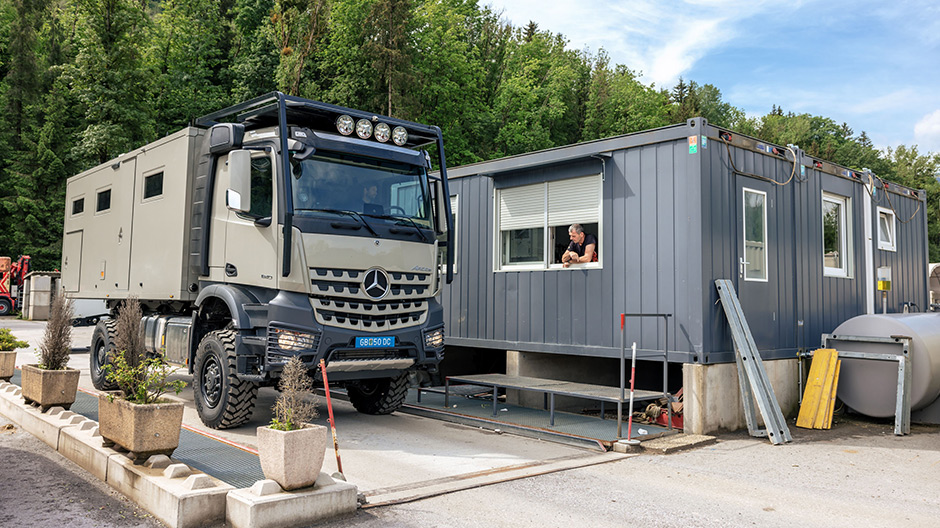
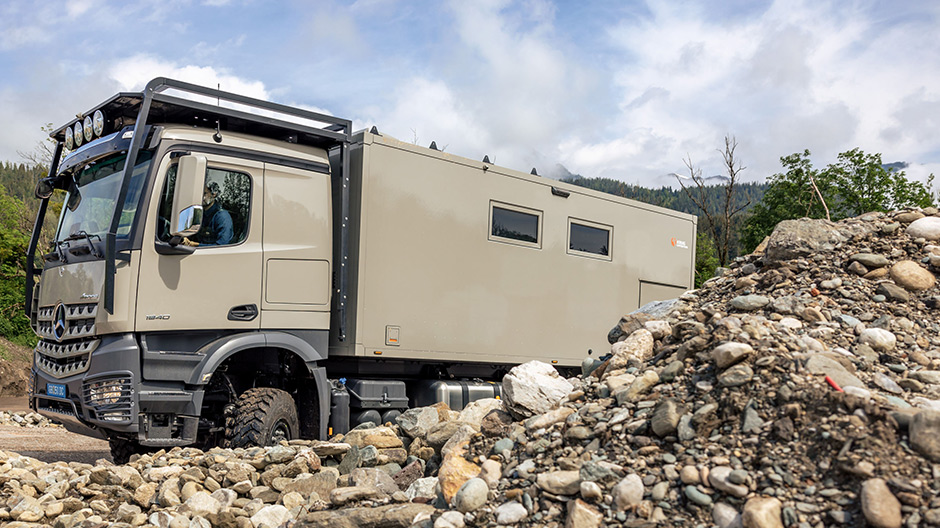
Müller climbs into the cab of the Arocs, and drives the 4×4 to the nearby weighing station. The display on the scales shows 12.6 tonnes. “There’s a bit more to come once we’ve finished all the conversion and extension work.” Nevertheless, a first test drive is now on the cards. To do this, he activates the differential locks with the rotary knob to the right of the steering wheel, the secondary display provides visual feedback and the Arocs rolls smoothly over the gravelly field.
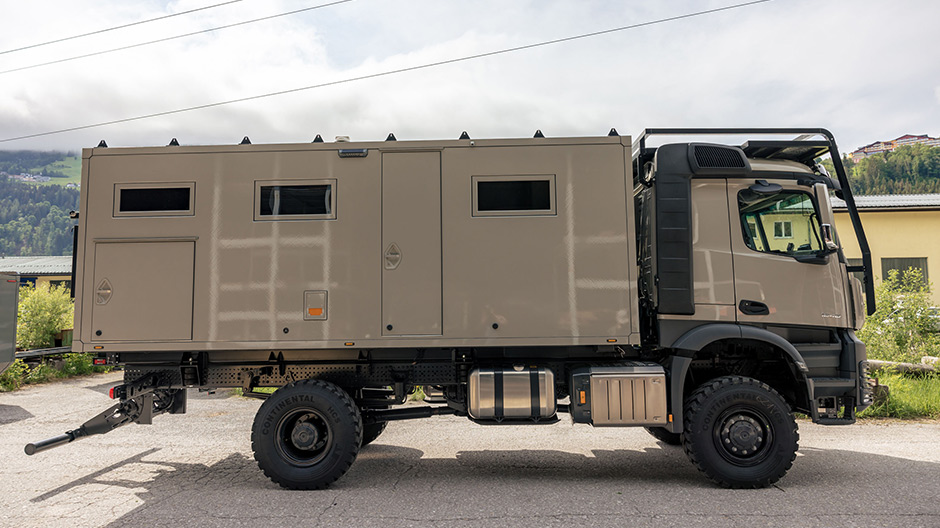
Extra-large tanks, permanent all-wheel drive.
The vehicle’s features include two extra-large diesel tanks plus a water separator with a total capacity of 680 litres. “Sometimes, you get bad diesel in faraway countries. That’s where the built-in water separator comes in handy,” says Müller.
In addition, the Arocs has permanent all-wheel drive with three locks and is equipped with a tyre-pressure control system – the less air, the better the traction on sand. An energy system with solar panels and large lithium batteries means travellers are independent of external sources of power. In addition, a generator ensures that electricity can be generated in an emergency, even without solar power. The heater is coupled to the base vehicle so that the engine can be preheated with the heater from the cabin, but also vice versa. Müller: “That way, you have it nice and warm in the cabin straight away when you come from the cockpit into the living living area after a trip.” A water-treatment plant with effective filter systems makes it possible to treat water from rivers so that it is of drinking-water quality.
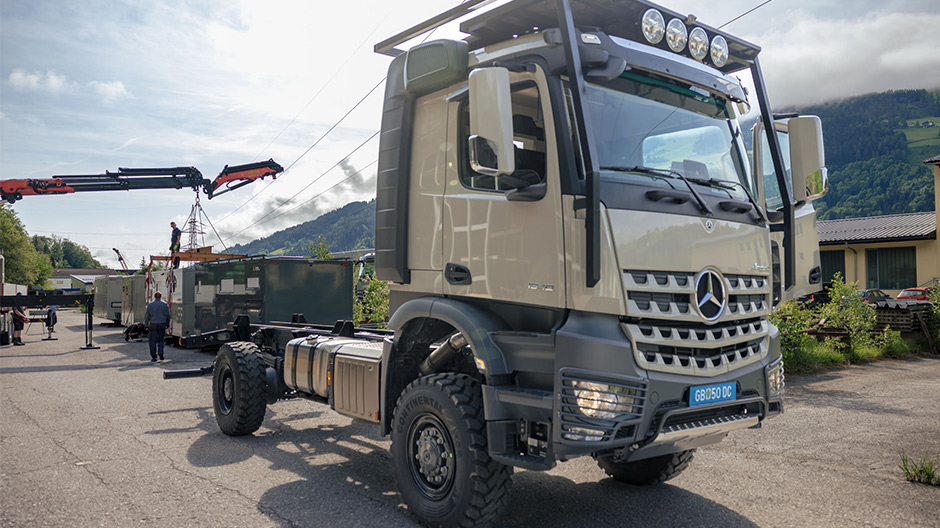
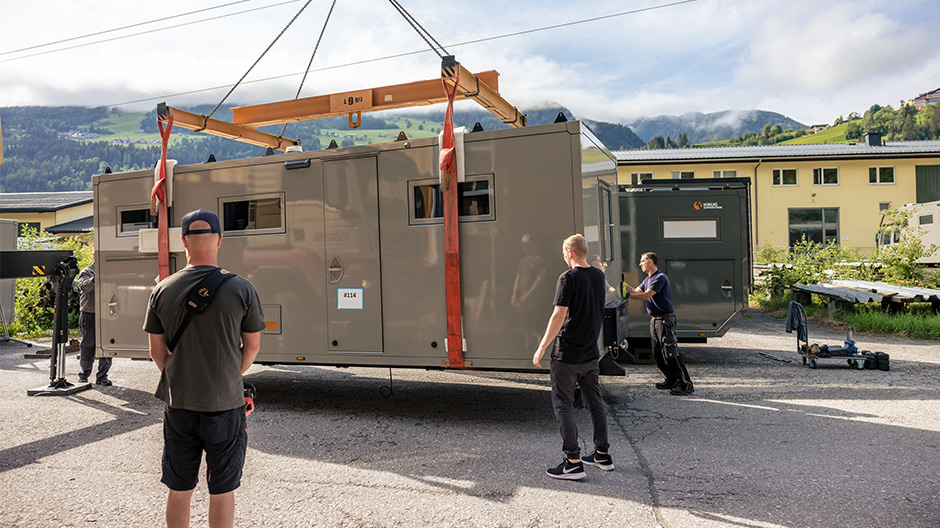
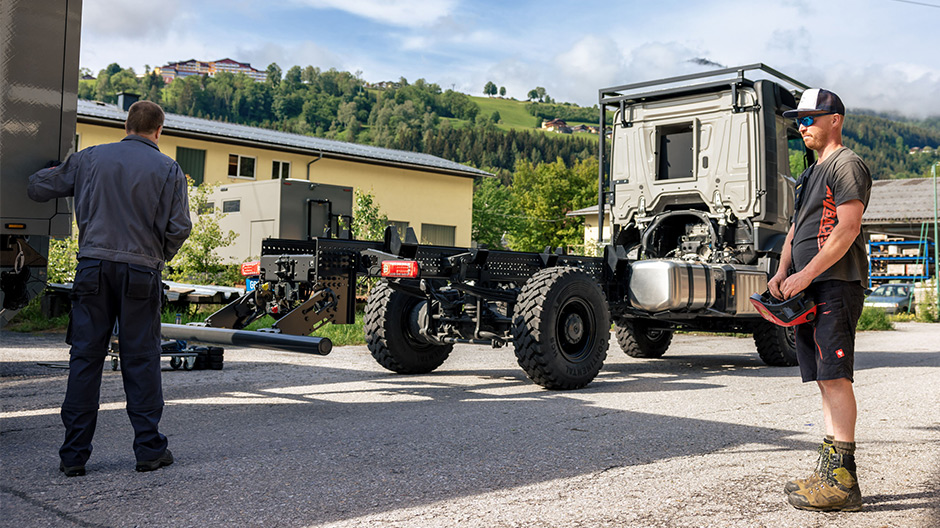
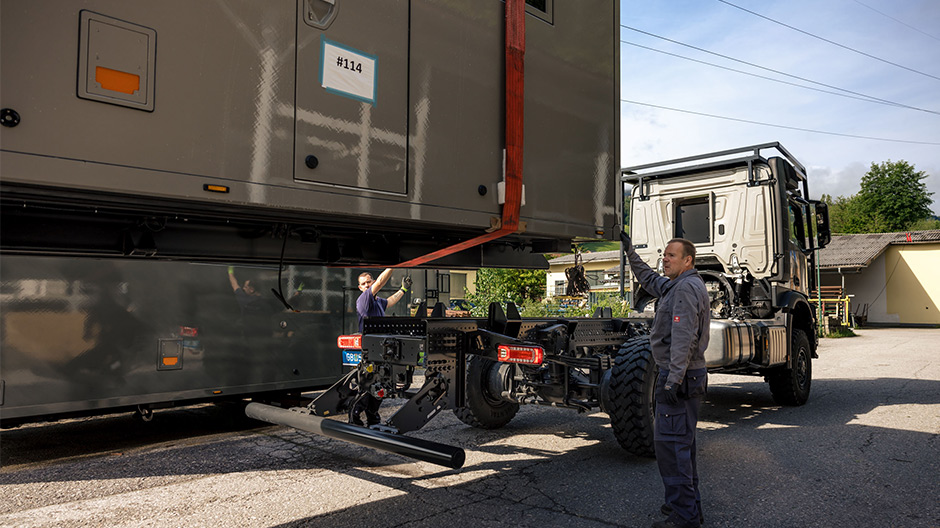
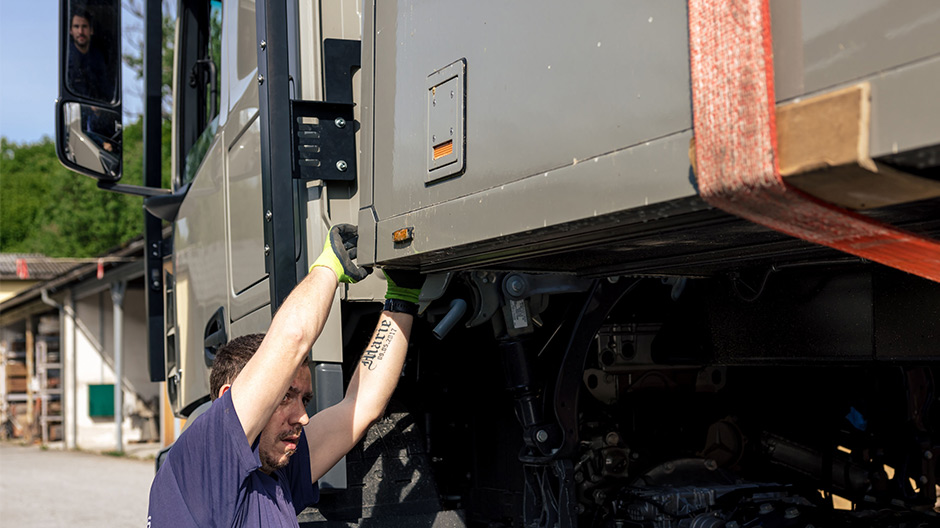
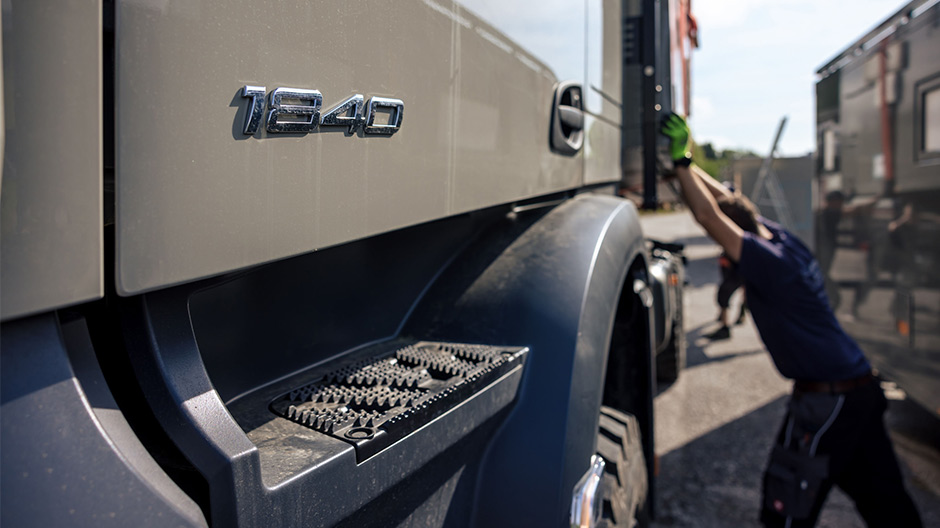
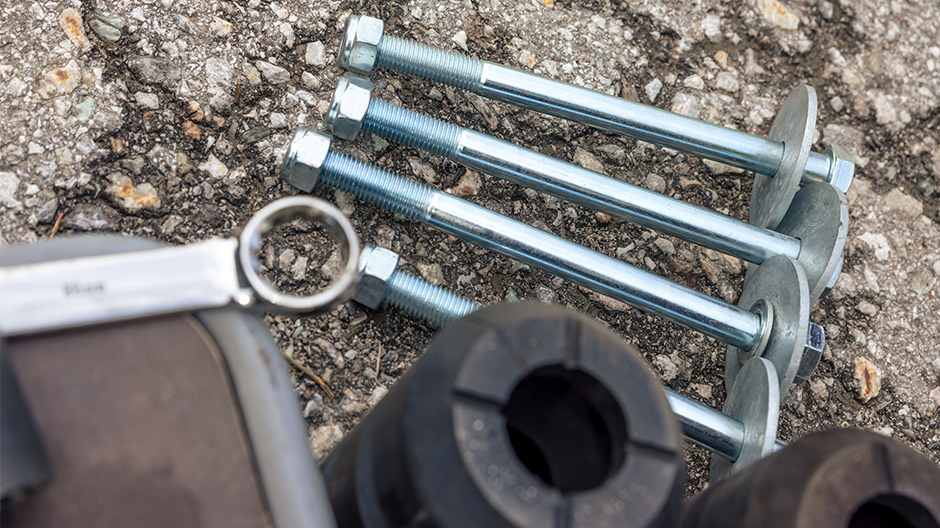
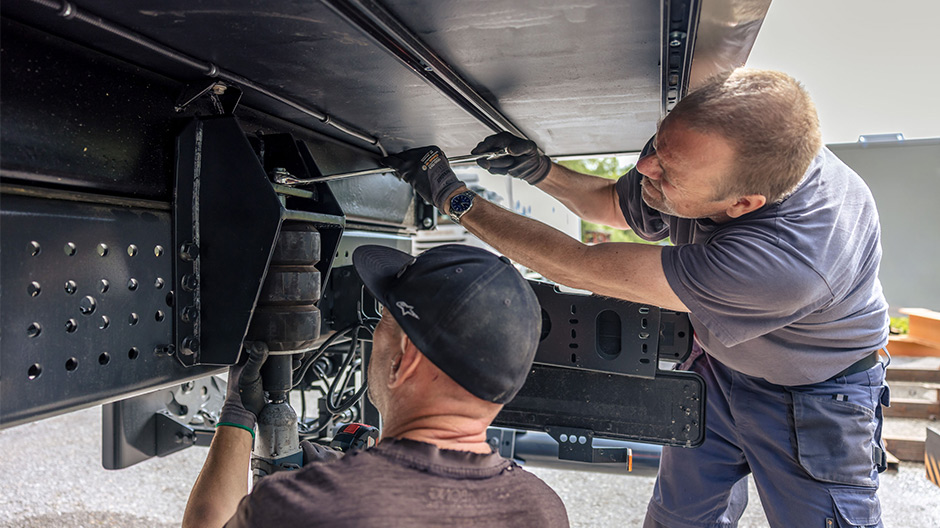
After returning to the workshop on the company premises, Werner Müller climbs a ladder into the living area of the cabin – the electrically retractable stairs still have to be installed. “The inside of the box has been kept very minimalist, so that as little as possible can break.” However, the level of comfort is not lacking: upholstered benches, a kitchenette with an electric stove and induction hob, and a separate bathroom with a shower and chemical-free toilet. The 60-millimetre sandwich-panel wall of the cabin insulates as well as a 300-millimetre wooden wall.

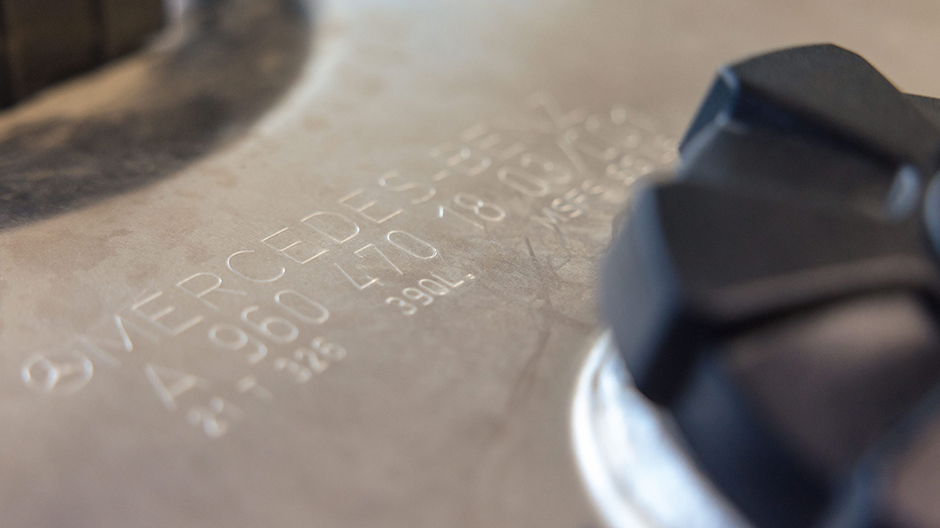
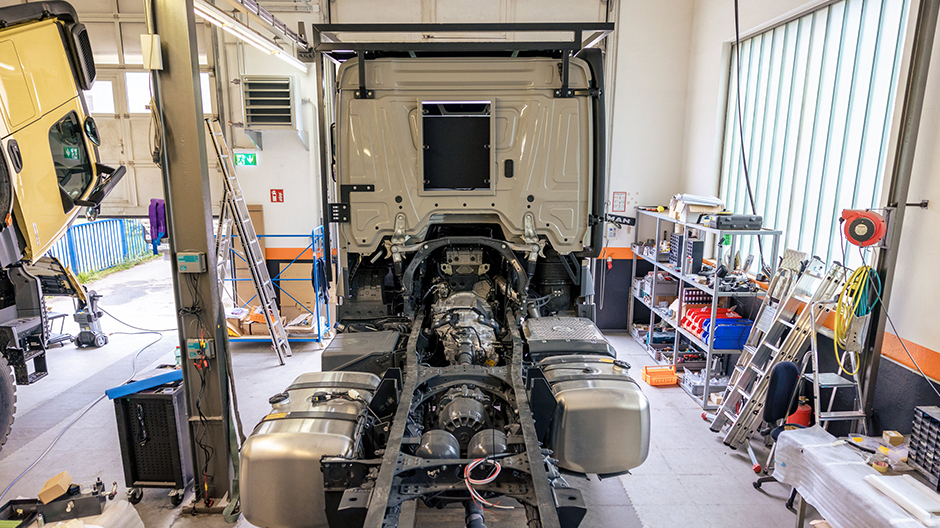
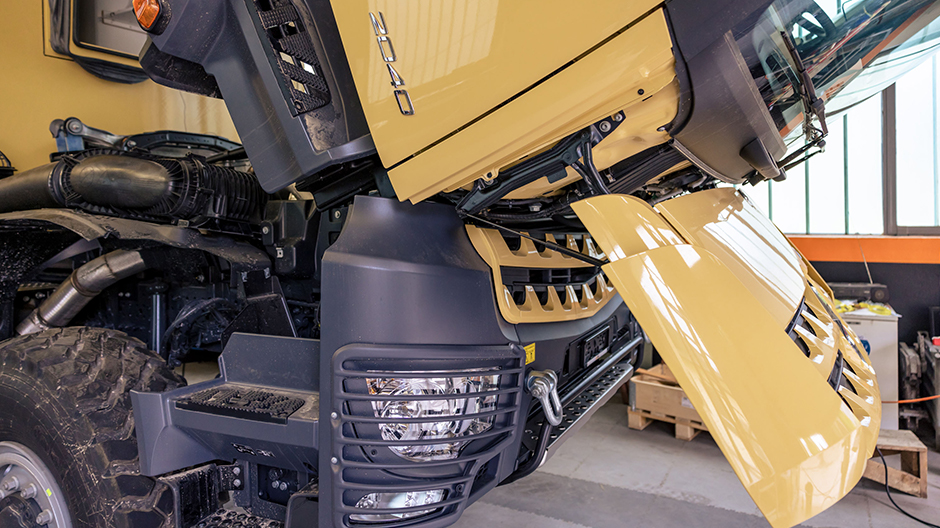
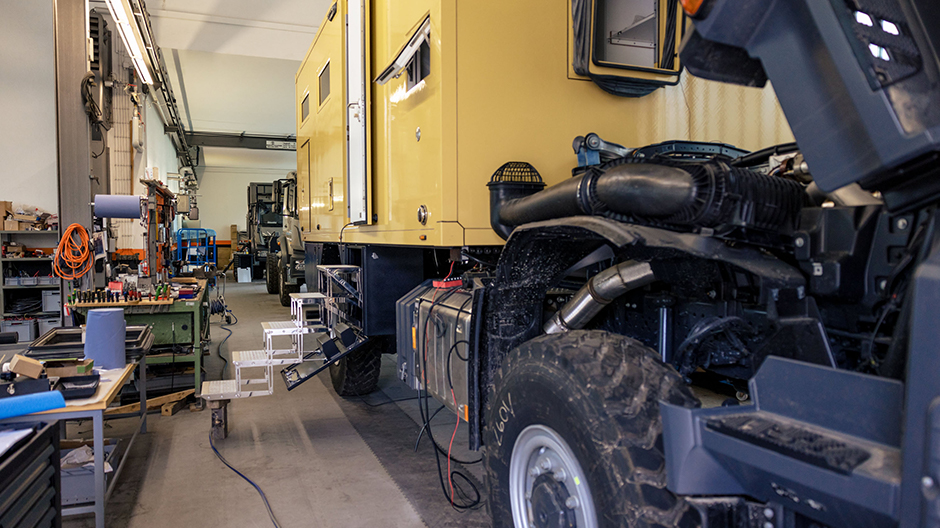
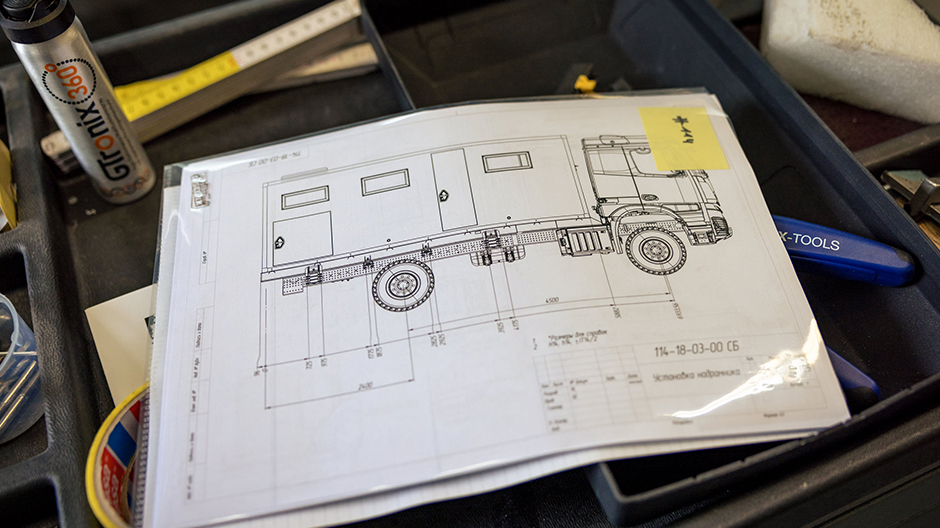
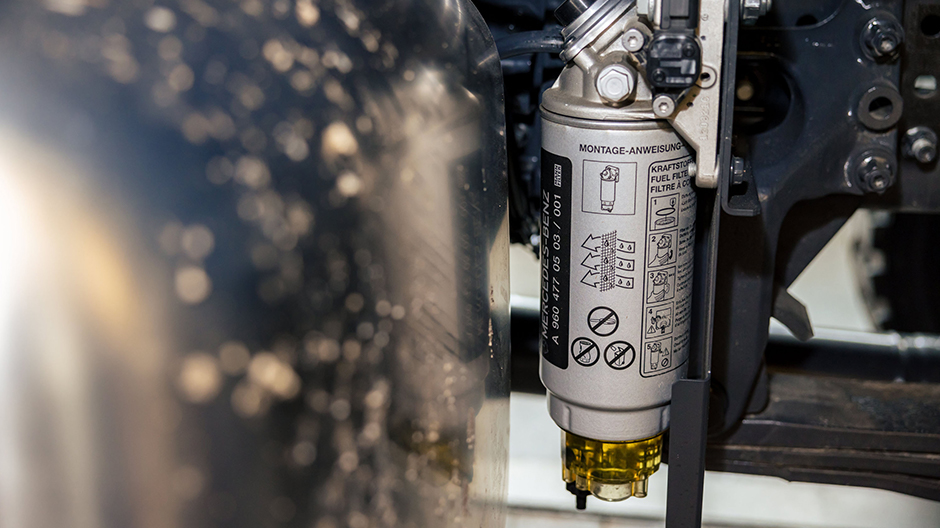
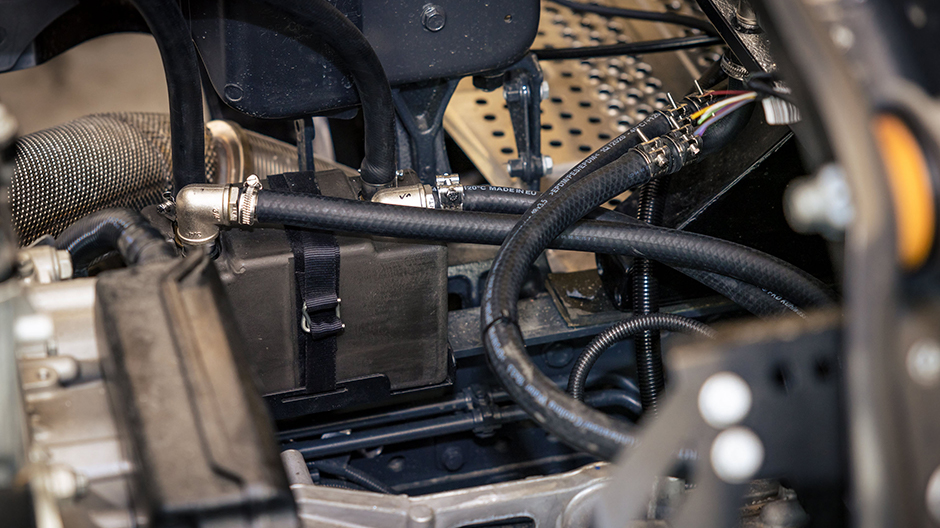
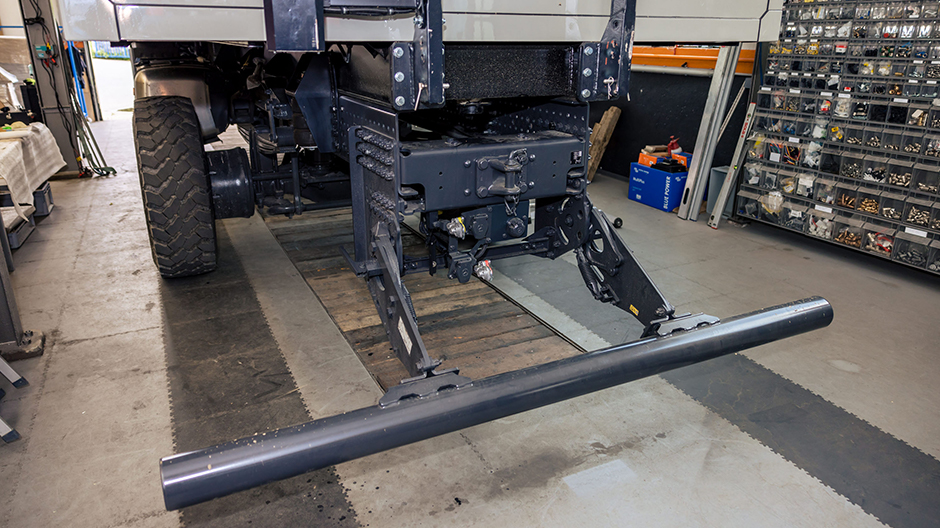
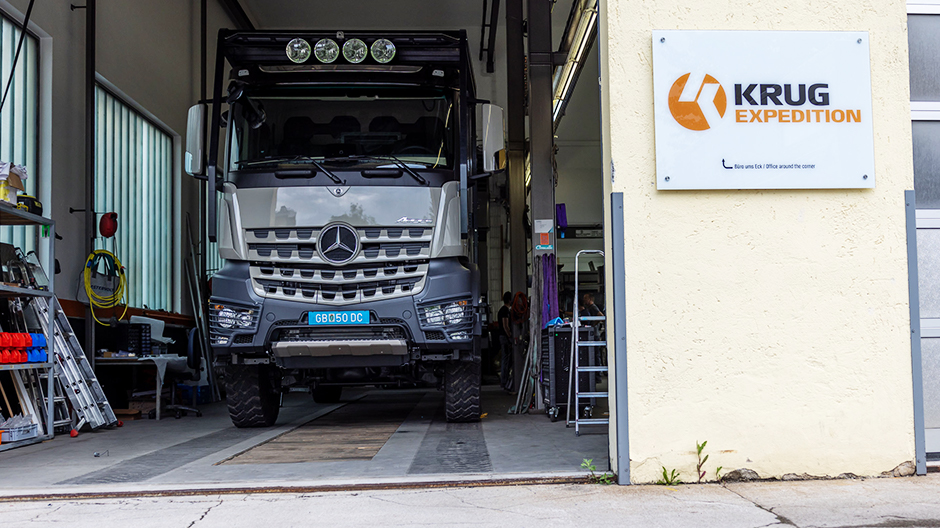
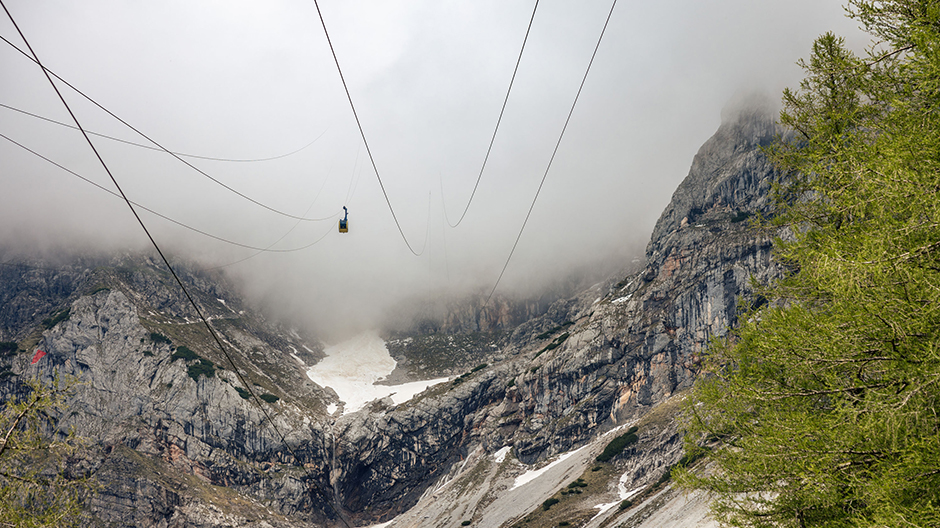
The work goes on in the workshop. Among other things, large electrical appliances are still being installed in the cabin and storage boxes are being fitted to the chassis. But it won’t be long before this truck is on the road in countries like Tanzania, the United Arab Emirates, Alaska or Canada – just like all the other Krug vehicles before it.
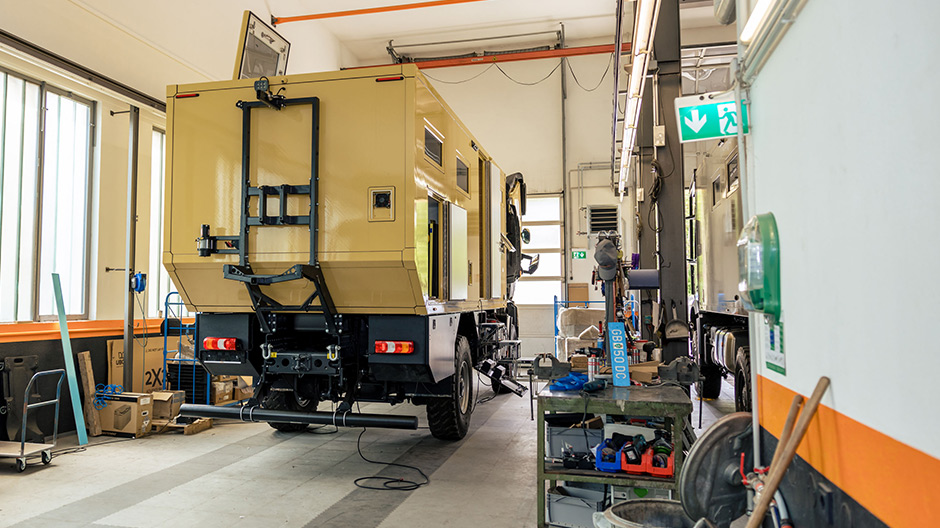
Photos and video: Alexander Tempel




Comment
Please log in to post a comment.
13 comments
Österreichische Fahrzeugbau-Spezialisten habens immer wieder drauf, wie man auch hier wieder eindrücklich vermittelt bekommt 👌
Mit dem robusten u. vielfach bewährten Grundfahrzeug von MBT u. so einem Spezialaufbau macht Weltreisen ganz sicher enorm Freude 👍
Österreichische Fahrzeugbau-Spezialisten habens immer wieder drauf, wie man auch hier wieder eindrücklich vermittelt bekommt 👌
Mit dem robusten u. vielfach bewährten Grundfahrzeug von MBT u. so einem Spezialaufbau macht Weltreisen ganz sicher enorm Freude 👍
Beim Wohnaufbau würden wir wieder einen auf Container Basis bauen, das hat sich bei uns schon in mehreren Situationen bewährt.
Liebe Grüsse von uns 🤟
Beim Wohnaufbau würden wir wieder einen auf Container Basis bauen, das hat sich bei uns schon in mehreren Situationen bewährt.
Liebe Grüsse von uns 🤟
Viel Glück damit !
Gruß OTTO !
Viel Glück damit !
Gruß OTTO !
Es ist schön mal was von einem Aufbaufertiger zu lesen!!!
👍👍👍👍👍⛟😎
Es ist schön mal was von einem Aufbaufertiger zu lesen!!!
👍👍👍👍👍⛟😎